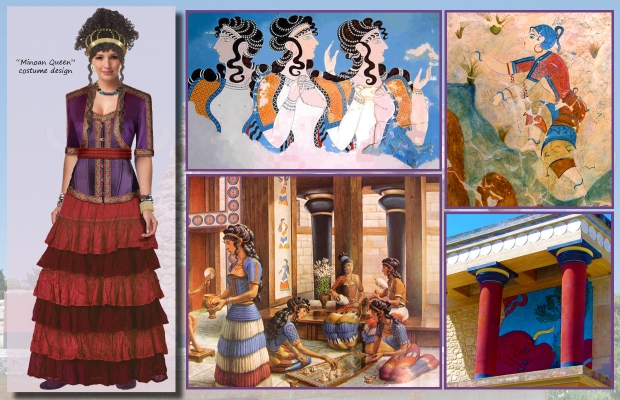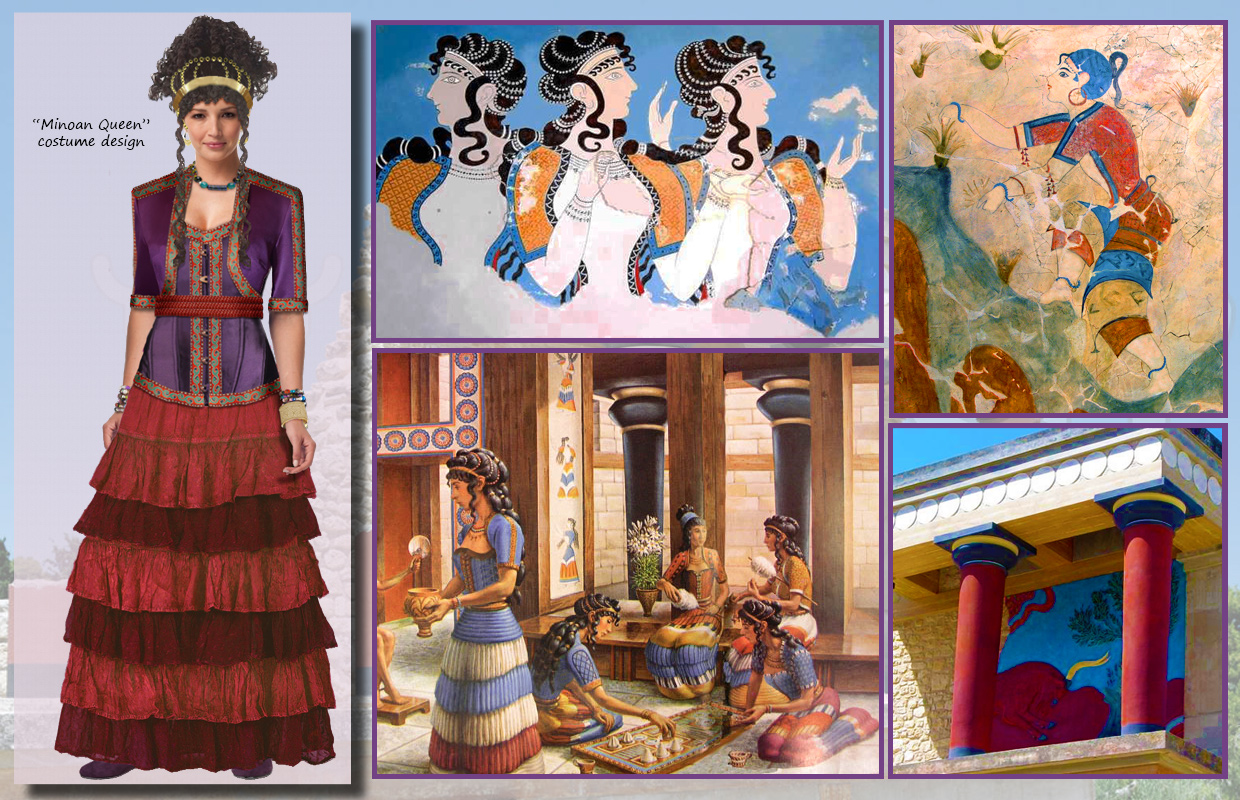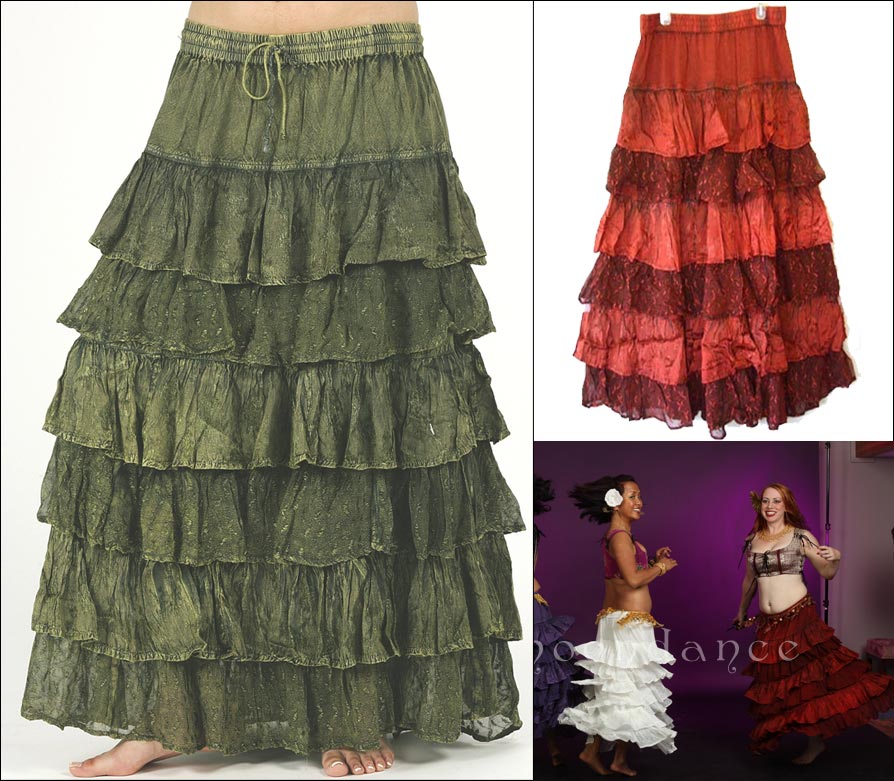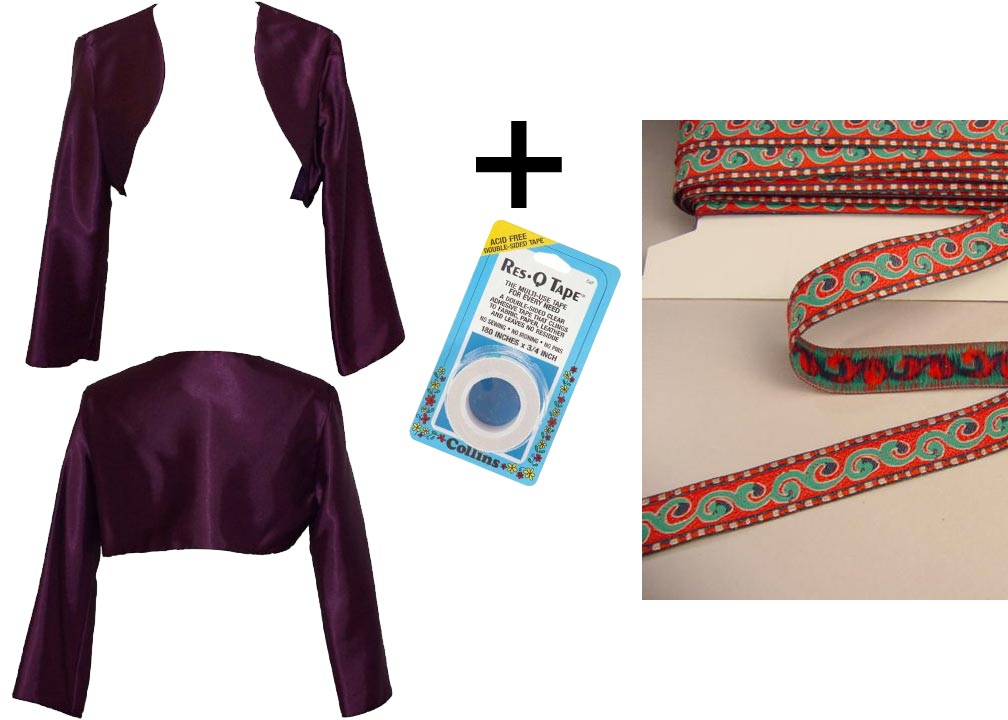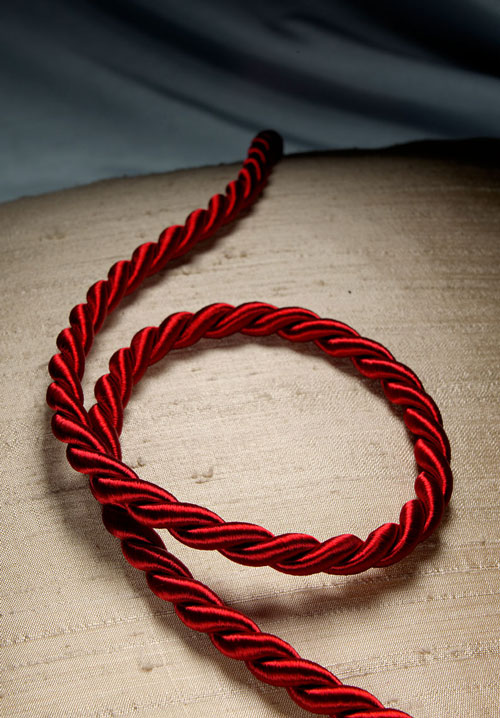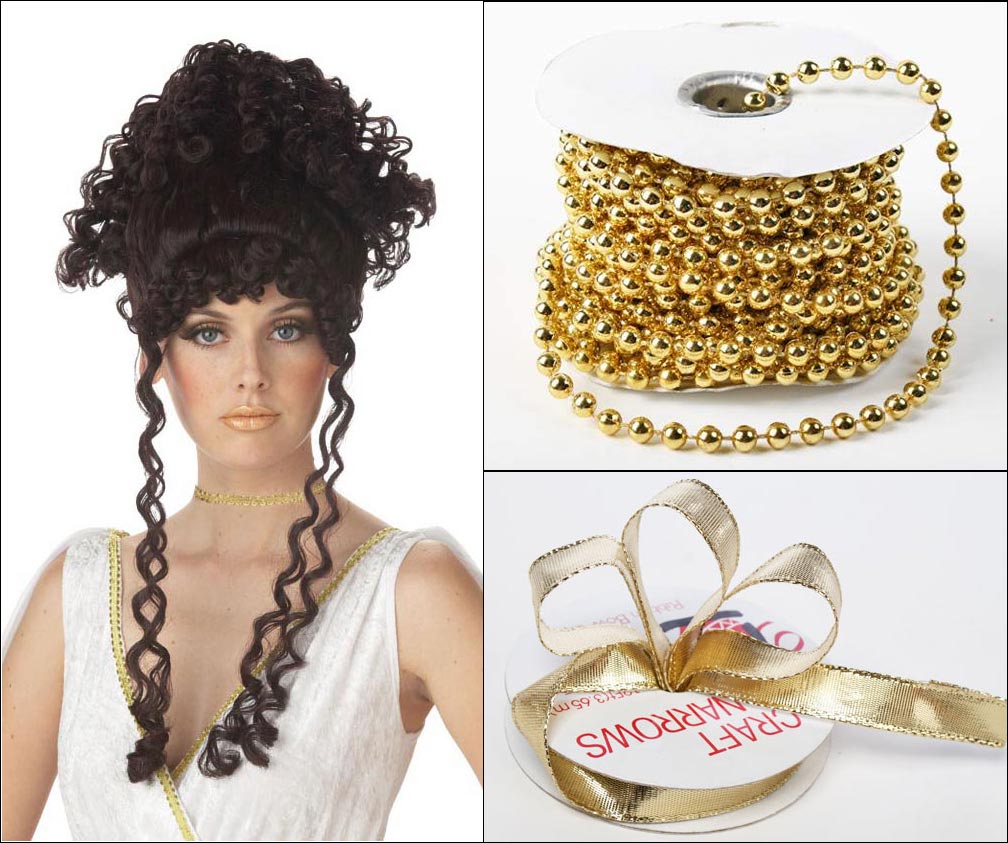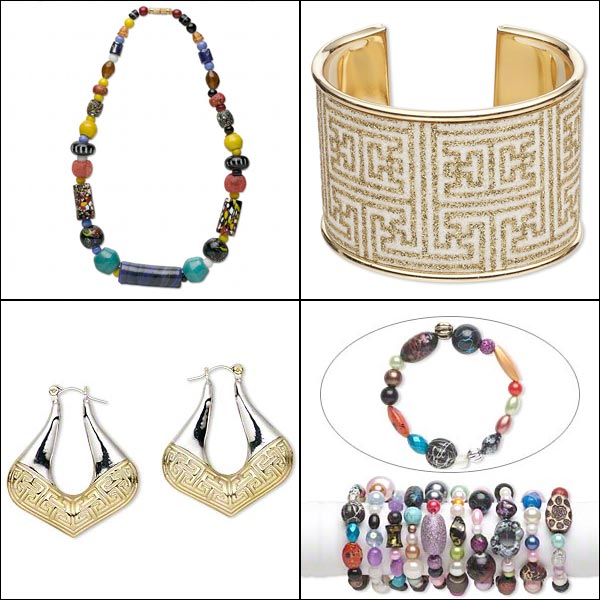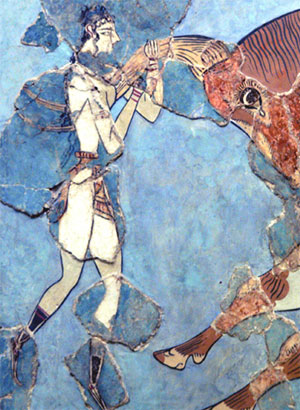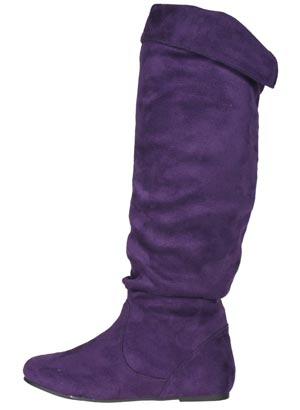We don’t know her name. And unless somebody deciphers Linear A, we probably never will. All we know is that she existed, and that her world was beautiful. The centerpiece of our main illustration is an artist’s recreation of life in the queen’s apartments at the Palace of Knossos around 1500 BCE (bottom center). Note, however, that we’ve had to modify it to make it G-rated, since the ladies of the Minoan civilization apparently wore their bodices completely open.
Minoan clothing was astonishing. There was nothing else remotely like it in the ancient world. If the paintings from Crete are accurate, the women wore multicolored flounced skirts, tightly fitted bodices, and gorgeous fabrics with stripes and dots and spirals. (The men wore loincloths. Heh.) Our costume design attempts to recreate this look with modern garments, and without getting you arrested for indecent exposure. The trickiest part is the bodice: our solution is to combine a corset with a bolero jacket, trimmed with Minoan-looking spiral pattern ribbon. The pieces we suggest, from left to right:
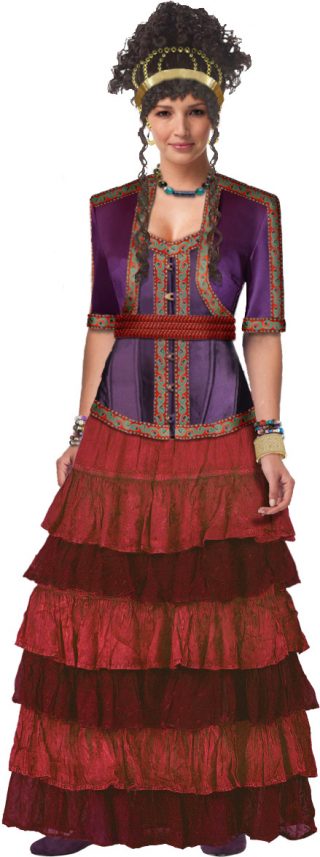 1. Full length tiered skirt in red. This beautiful skirt has tiered flounces, just like the Minoan paintings. (The tiers have contrasting tones, though the large product image of the green skirt kind of washes out the difference.)
1. Full length tiered skirt in red. This beautiful skirt has tiered flounces, just like the Minoan paintings. (The tiers have contrasting tones, though the large product image of the green skirt kind of washes out the difference.)
2. Purple corset trimmed with spiral pattern ribbon. Use a double-sided tape like Res-Q to temporarily attach the ribbon to the corset; it won’t leave any residue. You’ll need three or four yards of the ribbon to trim the top and bottom of the corset, as well as to run trim vertically alongside the front fastenings.
3. Satin bolero jacket in eggplant trimmed with spiral pattern ribbon. You’ll need another three or four yards of the ribbon for trim; again, use the Res-Q tape to temporarily attach it. The arms on this jacket come unhemmed, so you can fold them up to elbow height. When you put on the jacket, use a couple of pins to attach it to the corset to help create the look of one garment.
4. Three yards of cord in cayenne red. This is for your belt; wrap it around your waist about three times. Minoan belts had a peculiar rolled shape, so what we want is the thickest cording we can find. This is 3/8 inch, but you may be able to find a larger size. You might also want to just cannibalize some drapery tiebacks for the purpose.
5. A “Greek goddess” wig (from a costume store) with gold beads and gold metallic ribbon. Minoan hairstyles were very elaborate, as you can see from the illustrations. Unless you can do that with your own hair, a wig like this is probably the best bet. It’s actually easier to work with a wig, since you can set it in front of you while you attach the beads and ribbon. We used the gold beads to wrap the crown of the wig as well as the bangs line, and then ran vertical rows between them. The metallic ribbon encircles the wig at the bangs line. Bobby pins are your friend.
6. Jewelry from Firemountain Gems. Firemountain sells to everyone at wholesale prices, so it’s a great place to stock up on jewelry. Our selections pay homage to the patterns and materials beloved by the Minoans. Clockwise from top left in the composite image: a glass bead necklace; a cuff bracelet; a set of 10 mixed bead bracelets; and a pair of gold-and-rhodium earrings with a Greek key design (related to the Minoan meander).
Shoes: Minoan footwear was interesting. Indoors people usually went barefoot, but outside they wore shoes. Crete is a rocky place, and the inhabitants favored closed-toe shoes and boots. Some of the paintings show Minoans wearing calf-high and ankle-high boots; others depict low shoes combined with what looks for all the world like athletic socks. We decided that purple boots would look good with our queen costume. The Cookie boots by Story come in a beautiful rich purple:
Illustration credits: The artist’s reconstruction of life at the Palace of Knossos appeared in The Epic of Man, by the Editors of LIFE Magazine, 1961. The artist’s name is unknown. The other images are of Minoan frescoes found at the palace.

